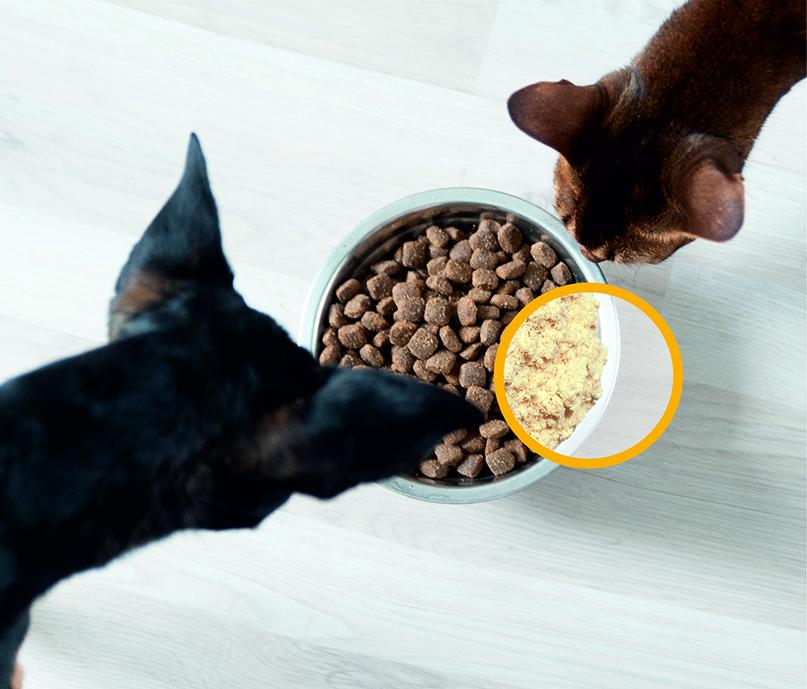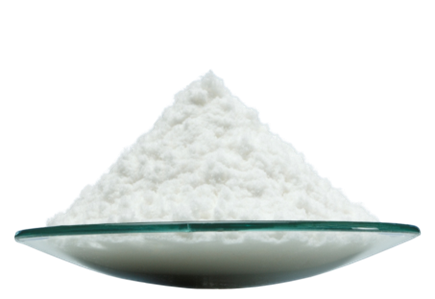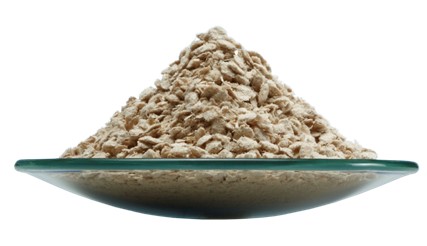

About company
We are a manufacturer, a problem solver and a reliable technology and system partner for a wide range of industries. As an owner-managed family business, we are strongly rooted in our southern German region since 1878, and as a corporate group we are now globally active, with around 3,500 employees in more than 90 locations worldwide.
A spirit of inventiveness, courage and close customer relationships has shaped what started as a classic oil and grain mill into a global market and knowledge leader in the segment of sustainable and functional plant fiber technology.
At JRS we have been making high-quality fiber ingredients for pets for more than 60 years. Today we are a global expert in animal nutrition solution that are natural, healthy and sustainable. Our long history producing high-quality and nutritious fiber ingredients has provided an edge in producing premium natural ingredients that pet food manufacturers can trust. The entire process from harvest, storage and final production is done under controlled conditions in order to guarantee a complete product integrity and traceability.
JRS Petfood offers a wide range of choices for all pet food categories with benefits through all stages of our pets life as well as during the pet food production.
Scientifically proven ingredients and an experience team to help you analyze together the problems and develop fiber solutions.
Ingredients with added value to our pets and pet food producers.
Your all-in-one partner!
Products
Company News
 Vegetable Origin
Vegetable Origin

3+ MIN





05/01/2024
Fiber Innovations - Time to shine
Gut Health
Feeding complete foods rich in natural fiber is undoubtedly good for a pet´s health – a fact that is backed up by an array of scientific studies. As components of pet food and functional ingredients, specific fiber sources are primarily known for their ability to keep a pet´s digestive system healthy and balanced. Clinical studies have shown that supplementing dry and wet cat food with cellulose fiber helps to reduce typical hairball symptoms and to raise fecal hair excretion in cats.
Preventing obesity
As in humans, pet obesity numbers continue to increase year by year. According to the Association for Pet Obesity (APOP), nearly 60% of cats and 56% of dogs in the US are overweight or obese.
Weight management foods enriched with concentrated cellulose fiber can help to better control weight in cats and dogs without affecting food palatability.
Dental care
Oral health is another top concern among pet owners. Approximately 70% of cats and 80% of dogs develop some form of oral health problem by the time they are three years old. Clinical studies have proven that dental foods and snacks enhanced with specific cellulose fibers work more effectively to promote oral health in dogs when compared with fiber-free control products.
Standardized quality
Consistency, texture, and uniformity of pet food products are key quality attributes that are important to consumers but may be difficult to maintain. Given the variable nature of ingredients and the complexity of the manufacturing process, creating the right consistency can be a challenge for the manufacturer. Well-known binders such as spray-dried plasma (SDP), wheat gluten, or egg white/albumin commonly are used in so-called restructured meat products like chunks and in all 47 meat applications for their high swelling, water retention, and emulsion capabilities.
With a series of long-term pilot scale tests at their Technical Competence Center in Rosenberg (Germany), JRS demonstrated that a favorable cost-benefit is achieved by partially replacing conventional binders with functional cellulose fibers.
Regardless of the type of meat ingredient tested, replacing 2% SDF with 1% cellulose helps optimize the key parameters in a steam tunnel process and improves the textural parameters of the chunk before and after retorting.
Fiber as a tool
Fiber research is also currently underway into capturing product quality features in dry grain-free products with high meat inclusion in order to overcome typical extrusion challenges such as stickiness, reduced throughput, or poor product integrity.
Natural products for the future
As pet food trends follow our tastes and expectations discovering the functionality of simple, natural plant fibers is a key field of innovation.
These special natural fibers can help develop vegan meat alternatives giving the substitute products the right consistency and the desired structure. Moreover, many pet owners are exploring raw feeding with product convenience being a strong argument for consistent purchase. Natural plantfibers can make raw pet food firmer and more comfortable to handle while contributing to good digestion.
Energy Savings Opportunities
Each pet food and treat product format offers opportunities for cost savings and improvement in overall efficiency, especially during a global energy crisis, this fact is the focus of every entrepreneur. Specialized cellulose fibers have proven to make production processes more sustainable. In dry pet food, the drying time in production can be reduced by 50% making way for lower power consumption and relieving the bottleneck in drying, allowing for higher product throughput.
Tailored Fiber Solutions
With enormous demand across the pet industry for innovative products, manufacturers are looking for unique marketable, and functional ingredients.
Specialized plant fibers can be considered the pet food technologist´s toolbox for providing a wide range of functionalities across the whole spectrum of pet food products: dry to wet, frozen to sterilized, and even dietary supplements such as tablets.
As a leader in fiber products, JRS offers a comprehensive range of fiber ingredients that are suitable for all manufacturing processes and formulation options. Fibers that can help create sustainable pet food for better differentiation and improved pet health.
By: Dr. Astrid Bosse. JRS Petfood & Aquafeed
Source: All Pet Food Magazine
 Ingredients
Ingredients

3+ MIN





11/08/2023
Functionality beyond nutrition
Fibers as natural and renewable plant-based materials are ecological products at their best. Because of their multifunctional properties and compatibility with nearly all other substances, fibers provide solutions for many everyday products. The selection of the right raw material and the mechanical manufacturing process is of paramount importance, as this allows the particle size and structure to be tailored, and the properties of the fibers depend, to a large extent, on these parameters. Through a finely tuned interaction of suitable milling technology and fractionation, optimized products can be manufactured. ADVANCED MILLING TECHNOLOGY An impact mill acts on a fiber material with high shear forces. This results in strong fibrillation of the material, resulting predominantly in long, thin fibers (picture 1). In turn, these are characterized by a high binding capacity for liquids, be they water, oil, or others. In contrast, a cutting mill mainly shortens the fiber length but is not able to split fiber bundles into individual fibers very well. Therefore, this grinding system mainly produces shorter particles with a less pronounced fiber structure (Picture 2). These particles are less effective but have a better flow, dosing, and mixing ability. Picture 1: Long Fiber Picture 2: Short Fiber Other so-called 'rotor-stator systems,' which allow a very small grinding gap, are predestined for fine powder production. Although these powders do not have high functionality, they can be used in higher concentrations and can be easily and homogeneously incorporated into a wide variety of formulations. They also have good sensory properties. APPLIED KNOWLEDGE Having the possibility to understand how a structure or matrix of the fiber after a dedicated processing upgrade looks like is an innovative competitive advantage. Structural differences of various fibers can help to indicate certain functional properties, which are sometimes known in the industry but more often not known or not deep enough explored. This is the moment where scientific transparency meets technical application, researching the functional benefit of a new potential product in a real application like in main meals or snacks. For that, JRS has set up a pilot facility in 2017 where exactly this kind of internal research is happening. Only after enough internal trials and critical analysis, the products are manufactured on a larger scale to run first trials with dedicated customers. By doing that, it is possible to develop real innovative product concepts, which are new to the market before they become standard across the pet food world. Globally, there are thousands of innovation pipelines and marketing concepts creating a high demand for new innovative solutions. Having the right knowledge and products in place is key to being a constant part of new product developments and strategic partnerships. However, even in daily production, there are challenges where fiber can help to have a more efficient production. Some of them have the capability to generate a network, helping to keep the shape of a product intact or keeping a gravy clear during sterilization. Others can avoid syneresis in raw meat food or alternatively in all meat sausages, ensuring water excess can be held over shelf life. There are many more examples of what fiber can deliver beyond the nutritional benefit for pets. Fibers designed by nature in combination with research & development plus technical application knowledge are the future road for many new ideas around the globe beyond nutrition. By: JRS Source: All Pet Food Magazine
 Vegetable Origin
Vegetable Origin

5+ MIN





30/06/2023
Achieving Multiple Benefits with Functional Fiber Ingredients - A Holistic Approach to Pet Food Innovation
Turning to Functional Fiber for Added Fortification Texture and uniformity of pet foods are key quality attributes that are important to appeal both pet owners and their furry friends. Given the variable nature of pet food ingredients and the complexity of the manufacturing process, creating the right consistency can be a challenge for the manufacturer. From a functional standpoint a novel type of fiber based on long cellulose particles is gaining enormous traction in various types of 'grain free' recipes with higher meat inclusion. In extruded and baked applications the long and fibrillated fibers help to improve binding of ingredients and to add a particular firm texture in the final product. Thereby only small amounts of the fiber also prove to shorten drying time. Long cellulose fibers tend to keep the surface of the extruded product open and support moisture evaporation. In wet pet foods the long and thin cellulose particle enhances texture in meat chunks and reduces syneresis because of the high water retention and emulsion capabilities of the fiber. During retorting the fiber network helps to maintain the shape of the chunk and prevents unpleasant cook-out effects into the gravy. Additional cost saving effects can be achieved through the replacement of more expensive binder sources when reformulating lower-cost pet foods with cellulose fiber. On-Trend Pet Food Segments with Fiber-Based Solutions In recent years there has been rapid growth with smaller pet food segments like raw/frozen foods and meal toppers. These product categories allow pet parents to put their own touch on mealtimes. However, unlike more traditional formats like dry and wet foods, the category of pre-prepared complete raw foods is still more a niche segment because handling and preparation time of frozen foods does not provide the same level of convenience as opening a bag or a tin. In frozen foods, for example, the issue of syneresis is still very common. This means if pet owners are defrosting such foods prior to feeding, the molded products start loosing their shape and most of the liquids like water and blood start to leak out which does not look attractive to the pet owner. To overcome such issues, cellulose gels that are designed for human food applications such as ice cream or beverages, are used today also in fresh and frozen foods. Existing frozen food lines were redesigned with these easy dispersible cellulose gels to offer more convenience for pet owners. Cellulose gels are typically made by the process of copolymerization with Microcrystalline cellulose and other gums to create unique properties that are usually not found in conventional fiber gums. The fiber exhibits strong gel thickening behavior while having a good suspension ability, but also functions as emulsifier, fat and water binder. Beyond fresh and frozen pet foods, the segment of toppings, gravies and mix-ins is another emerging product category where manufacturers and pet owners can benefit from the strong stabilizing system of a fiber gel. Special vet-broth formulas, for example, are today supplemented with fiber gels to create a strong viscous emulsion when the powdered blend is mixed with water to support pets that need additional hydration. The unique film forming properties of the fiber gel are also helping to preserve freshness of dry foods once the meal topper is served as a supplement by the pet owner. Because of the fat-like characteristics, cellulose gels are creating a more creamy texture of the final product that can increase appetite appeal for picky eaters. Fiber Innovation for more Differentiation on Shelf Cat and dog food products are more sophisticated than ever and reflect many of the trends that are seen in food products for humans. Foods that come in different flavors, textures and shapes, claim to help maintain active lifestyles, and address specific health needs by the use of unique, marketable and functional ingredients. The downside of many nutritional and sometimes very costly ingredients is that they may potentially improve the quality of life for pets, but they are not visible to grab the attention of impulse buyers that are willing to spoil their pets with special treats and foods. So developing innovative marketing concepts with appealing ingredients is still a major challenge for the pet food industry. Microbeads made from natural and biodegradable cellulose fiber ingredients are a new concept creating an exciting innovation platform for the pet food industry from which to launch more complete solutions in dental foods. Although initially developed as cleansing and polishing ingredients in all type of personal care products for humans, the fiber pearls are today used in pet food formulations that target the oral care claim. The cellulose microbeads are compressed by an intense mechanical process to create round shaped pearls with a size of up to 1mm. These co-processed fiber pearls resist impact by heat and moisture and survive even harsh manufacturing processes such extrusion, tableting or retorting. This guarantees good visibility in the final product. Due to this unique characteristic the pet food industry is using these ingredients as abrasive agents for enhanced dental foods and to make oral care products looking more appealing to the consumers. Getting Greener with Natural Fiber Ingredients As pet owners increasingly look for clean label, sustainable and natural products finding the right fiber ingredient is more important than ever. More recently, plant-derived co-products of the human food chain became a ripe source of innovation for fiber ingredients. Fibers made of local sourced apples, for example, are becoming a preferred choice in a variety of pet foods and treats because of its unique composition of insoluble and soluble fibers, as well as pectin. Apple fiber is typically made of upcycled pomace procured from juicing companies. From a functional standpoint, the pectin content helps bind moisture and oil in pet foods and treats to enhance processability, moistness and final texture. In semimoist foods it may even replace chemical emulsifiers and moisture-binding agents. On top of it, this type of fiber delivers nutritional benefits due to prebiotic effects and provides also a positive sustainability story for brands. Latest developments in the field of fiber ingredients provide plenty of new opportunities for innovation. As pet food product developers brainstorm the next big chewy dog treat or nutritionally complete cat food, they may want to consider some of the suggestions that offer ways to differentiate products and break into untapped areas in the pet food industry. By: Peter Graff - Head of Business Unit Petfood & Aquafeed - JRS Animal Nutrition Source: All Pet Food Magazine







